“The machined or manufactured parts often require additional processing, like metal grinding. It helps to customize the sharp edges and remove the deburrs, machining marks, attached chips, or other imperfections.”
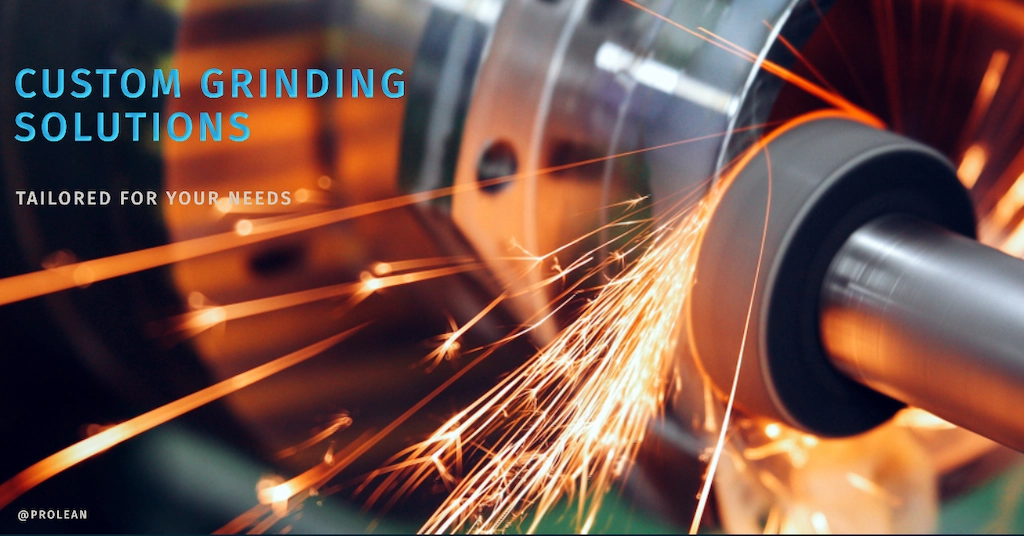
The process of custom metal grinding machining involves rubbing the abrasive wheel or belt against the work metal. It is also renowned as abrasive cutting among the manufacturers, as the grinding wheel is sometimes used to cut the metals.
This article will explore Custom Metal Grinding in-depth, elaborating on the involved equipment, tooling, innovation in Accurate Grinding, and many more aspects.
What is Precision Metal Grinding?
First, What is Precision Grinding? It is a finishing technique that effectively removes attached or excess materials from manufactured items, like CNC-machined, die-cast, or metal-fabricated parts.
The use of grinding in metal parts mainly has three functions, achieving the desired finish level, removing the burrs, and preparing the surface for further finishes like polishing, painting, or electroplating.
Unlike other machining, metal grinding uses abrasive grains in the wheel surface. These abrasive media cut and remove unnecessary materials while moving the workpiece back and forth on the wheel.
The Custom Metal Grinding
In many cases, the standard grinding machine or wheel can not finish the complex geometries with the intricate features. Here comes the role of Custom Metal Grinding in those cases. It is different from regular ones as it involves specialized control over the process. This approach is mainly used for grinding complex parts or components, requiring tight tolerances and a lower roughness level.
The material flexibility is another perk of customization, the custom grinding can finish any Machinable Material Options for CNC Machines, even the hard ones like titanium or tool steel.
Moreover, custom grinding demands Custom Grinding Equipment and tools to execute the operation.
- Wheels with specific grins and custom size.
- Custom jigs & fixtures
- CNC control of wheel and workpiece movements.
Try Prolean Now!
Equipment Used in Custom Metal Grinding Solutions
Several equipment and tools are essential to achieve the intended metal grinding solution. It means intended finish quality( Ra level), tolerances, and manipulation of edges & corners. The common equipment are CNC grinding machines, jigs & fixtures, inspection tools, and a cooling system.
Here are the details of all metal grinding tools and equipment.
1. The CNC Grinding Machines
A grinding machine is the primary equipment you need for metal grinding projects. It contains different components and mechanisms to handle the related tasks.
CNC grinding machines are the most popular for grinding the parts based on custom needs. These machines automate the process and can be easily controlled with digital instructions.
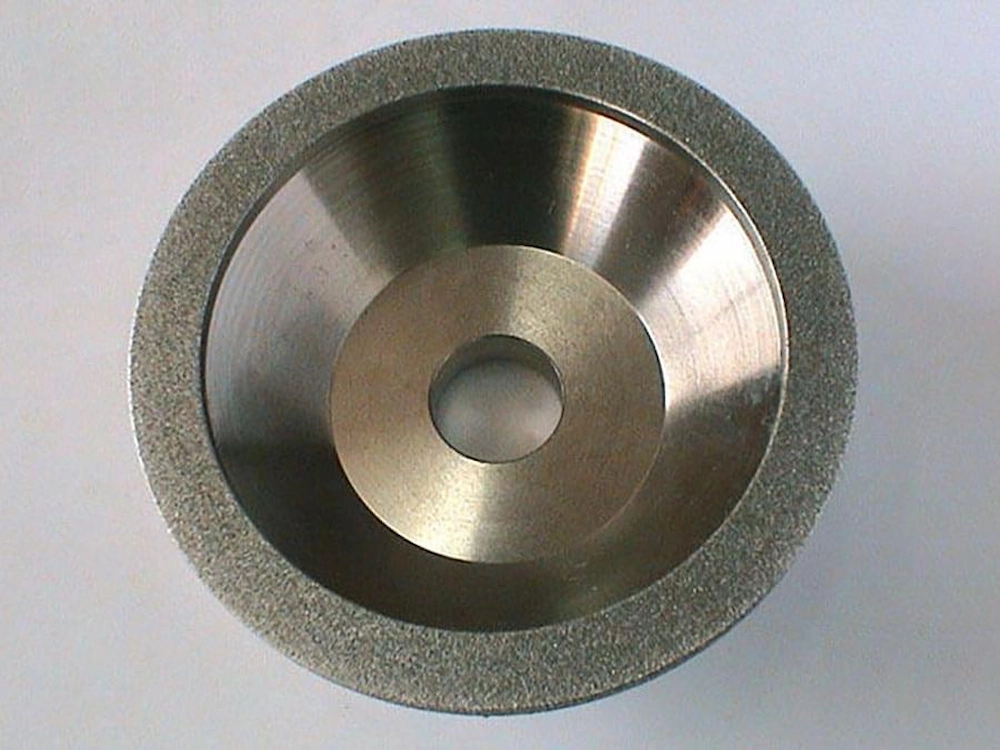
Custom grinding wheel
The CNC system controls the movement and speed of the wheel. It also positions the workpiece into the correct coordinates for grinding. Once the wheel starts to rotate, it contacts the workpiece and removes the unwanted material through abrasion. Meanwhile, the coolant system prevents overheating while the wheel rubs the workpiece surface.
Table: Components of a CNC Grinding Machine
| Component | Description | Role in Grinding Process |
| Work Table | The workpiece moves to the grinding wheel with the work table movement. | Precise positioning and movement of the workpiece. |
| Workpiece Holder | Like chucks, collets, or fixtures are used for this. | Secures the workpiece and prevents slippage and unwanted movements. |
| Grinding Wheel | A circular or disk-shaped tool with abrasive on the surface. | The main components for material removal through abrasion. |
| Spindle | The spindle holds and rotates the grinding wheel. | It enables the grinding wheel’s rotation and controls the speed. |
| Control Panel | It is the interface that takes the input for grinding parameters and monitors the process. | It ensures the precision and efficiency of the grinding. |
| Coolant System | It passes the coolant to the grinding area to reduce the generated heat and remove the debris. | Eliminate the thermal damage risks. |
2. Custom Fixtures and Jigs
First, the jig & fixtures are responsible for holding the metal piece or part to be ground. It mainly provides solid stability for grinding operation, which is important for the desired result as the loose holding can cause the workpiece deflection. But why the custom jigs & fixtures? The customization is for unique shapes and geometries that standard fixtures cannot hold. Often, CNC machining is applied to create custom jig fixtures for custom grinding projects.
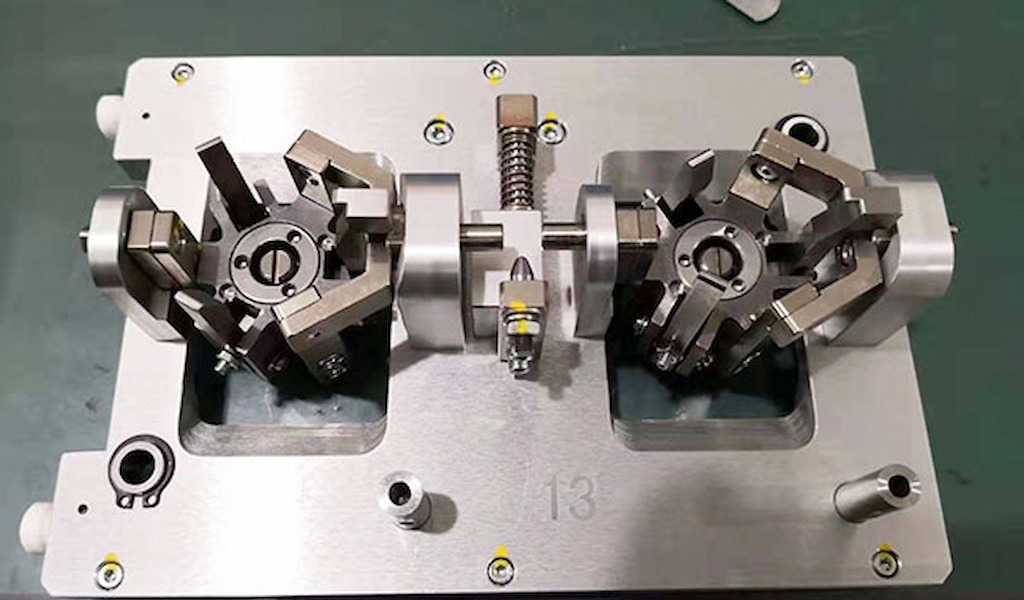
CNC grinding jigs and fixtures
Furthermore, consider other aspects of Custom Grinding Tooling, such as does the grinding wheel can access all surfaces of metal pieces, or the coolant flow mechanism.
For instance, surgical instruments contain intricate features of shapes. Here, the custom fixtures are best to ground the components perfectly.
3. The Abrasive Layer on the Wheel Surface
The layer of abrasive on the wheel’s surface executes the grinding operation. So, you can imagine how critical is the correct customization of the abrasive layer. You must choose the abrasive media or material according to the specific need of the particular grinding project. Next, the grain size of the abrasive also differs based on the volume of material you want to remove from the surface.
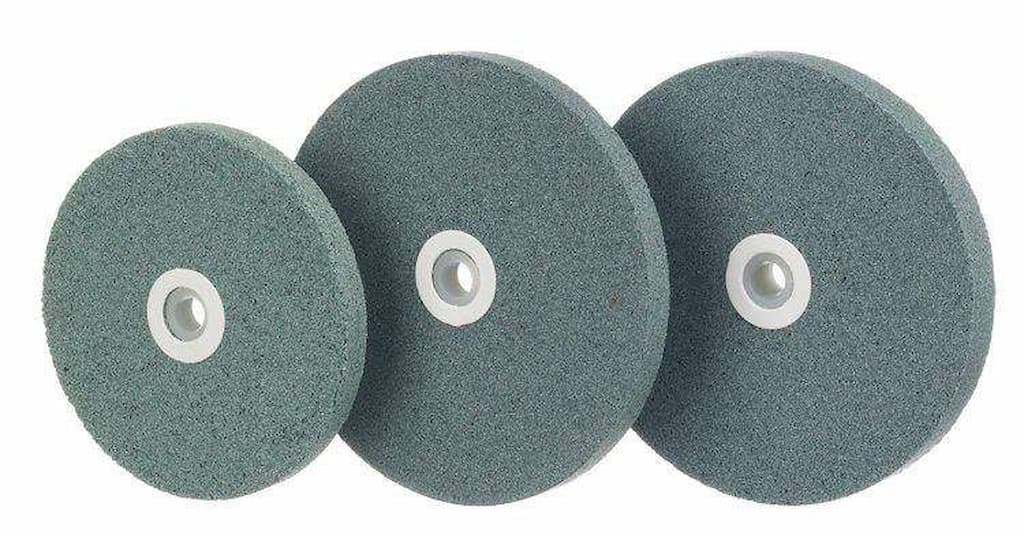 Abrasives for Metal Grinding
Abrasives for Metal Grinding
- Some of the options are;
- Aluminum oxide
- Cubic boron nitride
- Silicon carbide, etc
The grit number is the gauge measure of the grain size of the abrasive. It typically ranges from coarse (low numbers, such as 24-60) to very fine 600+
4. Dressing Tools for Custom Grinding
You can refer to these as wheel maintenance tools. They are responsible for keeping the abrasive surfaces of custom grinding wheels perfect for the operations.
Over time, they can become clogged with metal particles, or their cutting edges can become worn. So, it can affect the performance, accuracy, and surface finish. Here, the dressing tools restore the wheel’s shape and expose fresh abrasive grains for subsequent grinding cycles.
Example of Custom Metal Grinding: An Automotive Cankshaft
The automotive crankshaft needed to be ground after manufacturing it with any technique, forging, casting, or machining. This post-process removes the excess materials and helps to achieve the specifications required for its functionality.
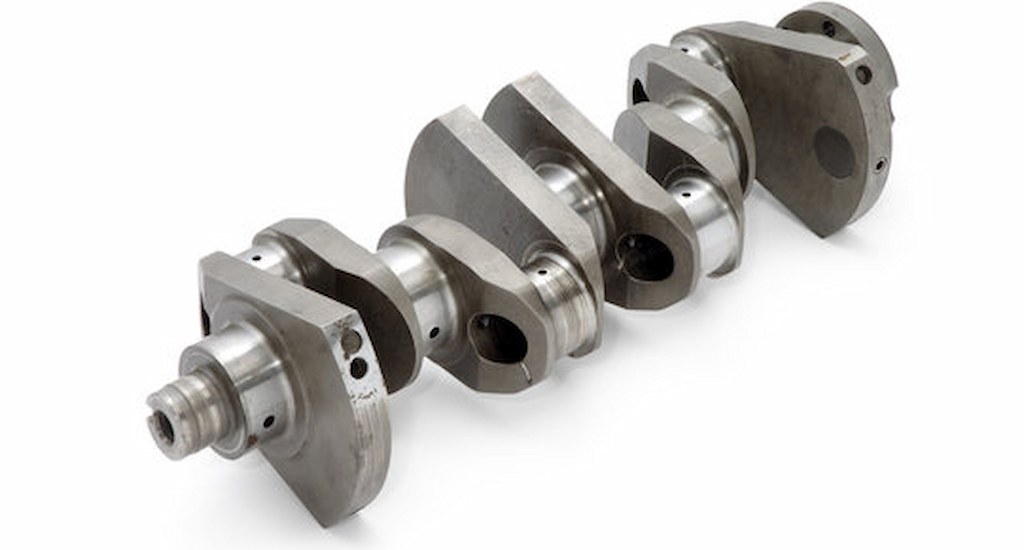
Automotive crankshaft
Next, why does it need the Custom Metal Grinding? The answer is very simple. Regular or standard grinding can not interact with all surfaces of the crankshaft. Therefore, it is hard to achieve a uniform result without the custom grinding approach.
Let’s elaborate on this specific example of custom grinding in brief;
1. Grinding Machine
The manual and other traditional grinding machines are not feasible for crankshaft grinding. Instead, the CNC Metal Grinding machine is highly preferable for this application. The CNC integration controls even the minor parameters for accuracy and also allows to grind the complex parts like crankshafts.
2. Abrasive Wheels for Crankshaft Grinding
Next, materials like cubic boron nitride (CBN) or aluminum oxide are used on the surface of the grinding wheel as an abrasive medium for grinding. It is because the high abrasiveness of these mediums can finish the hard crankshaft’s materials like forged steel or cast iron.
Note: Wheel size and grit number depend on specific requirements and other aspects of the crankshaft.
3. Coolant Mechanism for Crankshaft Grinding
The cooling of the grinding area during the process is necessary to counter the generated heat and lubricate the surface. So, coolant systems are vital. Typically, the coolant is a mixture of water and oil.
4. Dressing Tools
Dressing tools maintain the working condition of the grinding wheel in case of any damage to the grains of abrasive media. Typically, single-point or double-point diamond dresser.
5. The result of Crankshaft Custom Grinding
- Dimensional accuracy as intended( ± 0.0005-0.001”)
- Smooth Finish ( as low as 0 .025 µm)
So, the crankshaft becomes smooth and accurate for the initial design or intended specifications after the custom grinding. So, it can seamlessly convert the linear motion of pistons into rotational motion to turn the vehicle’s wheels.
Read More: Exploring Diverse Applications of Surface Grinding
What are the Advantages of Custom Metal Grinding?
- It achieves tight tolerances, which is how pars can meet specific dimensional and surface finish specifications.
- The grinding grinding process helps to reduce friction and wear in moving parts.
- Next, a better surface finish with custom grinding is also essential for durability, aesthetics, and functionality.
- Metal grinding is compatible with hard-to-machine metals and complex shapes.
- Customization in metal grinding optimizes the process of production efficiency and material wastage.
- It often eliminates additional finishing processes and saves time and costs.
- Custom grinding is cost-effective at high volumes due to the precision and speed of the process.
Precision Grinding Innovations in Manufacturing
The reason behind custom grinding’s exceptional capabilities is Precision Grinding Innovations in grinding machines, abrasive tools, work holding, and parameter optimization.
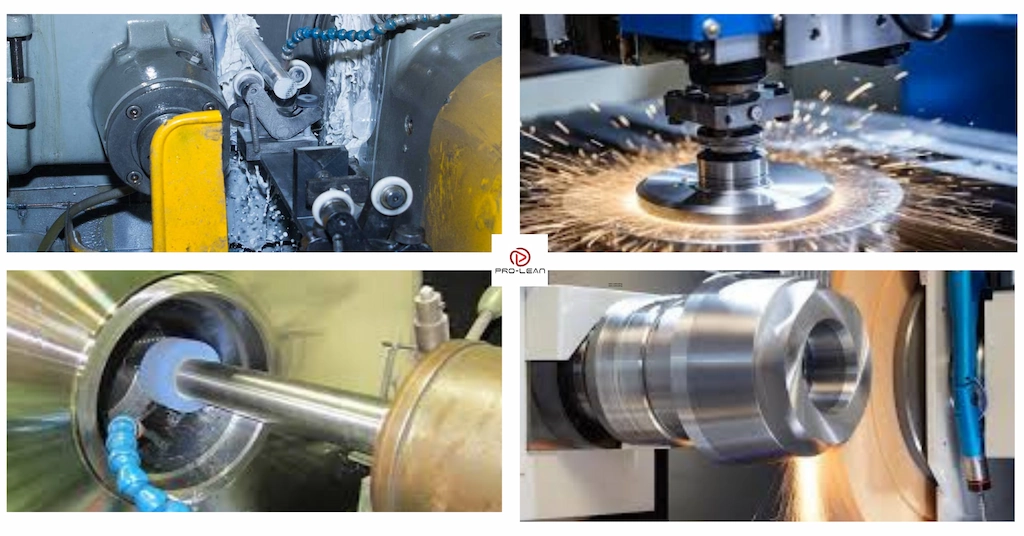 Custom Precision grinding operations
Custom Precision grinding operations
These latest innovations are significantly advantageous for precision. They can provide nanometer-level finishes and are compatible with metals with high hardness levels. For example, nano-finishing is essential for the finishing of optical applications.
- Electrochemical Grinding (ECG): This method uses a rotating wheel and electrolytic fluid for anodic dissolution. It’s especially effective for hard-to-machine materials.
- High-Efficiency Deep Grinding (HEDG): It allows high feed rates and cutting speeds for faster removal.
- Cryogenic Grinding: This Grinding Innovation employs liquid nitrogen to cool both the material and grinding wheel to prevent heat-induced deformations.
- Laser-Assisted Grinding: This involves preheating the workpiece with a laser before grinding to soften the material and reduce tool wear.
Custom Metal Grinding and Further Finishing at ProleanTech
As customization influences the precision grinding result, we focus on everything from material type to the desired result to meet your specifications at ProleanTech
Whether CNC machining, sheet metal, cast, or forged metal parts, our metal grinding, and further surface finishing services can cater to our dimensional and finish requirements. We have all advanced equipment and expert engineers working on surface treatment projects for a decade!
So, upload your design and kick-start your project to leverage our surface finishing facilities and expertise.
Try Prolean Now!
Summing Up
The customization of metal grinding enables the finishing of custom and unique geometries that the standard process can not. Adjusting the grinding tooling and abrasive parameters like grit number or layer thickness can achieve the desired Custom Metal Grinding result.
Thus, ensuring the proper custom grinding equipment, tooling, abrasive selection, and parameter optimization gives the flexibility to grind countless metal parts or components.
FAQs
What is custom metal grinding?
It is a precision process that removes excess material or marks from metal surfaces to achieve specific dimensions, shapes, and finishes.
What is the best tool to grind steel?
The best options are cubic boron nitride (CBN) or aluminum oxide. However, choose based on the hardness and the desired finish of the steel workpiece.
What are the components of custom Metal grinding?
It includes the grinding machine, abrasive wheels, coolant systems, and dressing tools.
Can I customize the grinding wheel according to my needs?
Yes, you can customize the grinding wheel according to your needs by the customization of grinding tools and parameters.
Resource
Sheik Muhamad, S., Ghani, J. A., Juri, A., & Che Haron, C. H. (2019). Dry and cryogenic milling of AISI 4340 alloy steel. ResearchGate. https://www.researchgate.net/publication/334068071




0 Comments